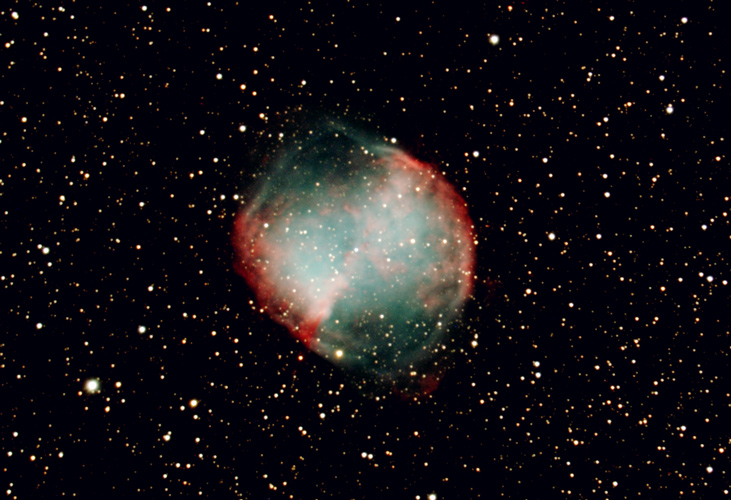The Dumbbell Nebula (M27)
Click on photo for larger image.
The Dumbbell Nebula in the constellation Vulpecula (the fox) is an example of a "planetary nebula." These are formed when a star comparable to our sun exhausts its hydrogen fusion process and blows off its outter layer into space. The glowing gas is a thick ring around the equator of the star, which we from our vantage point is viewed nearly edge on. The nebula is about 1200 light years away and is 2 light years in diameter. The red glow is from ionized hydrogen and the blue-green from ionized oxygen.
The remnant central star, visible in the photo, is a white dwarf. It is composed of hot dense matter, but lacks a fusion engine at its core. The stellar explosion happened about 1000 years ago and the glowing gas continues to expand outward. A similar fate awaits our sun in 5-8 billion years. White dwarfs slowly radiate their heat away and will eventually become cold black dwarfs. The universe is not yet old enough for any black dwarfs to have appeared.
Craig Lent, 8" SCT @f/7, 120 min exposure, QHY10, Potawatomi Wildlife Park, Marshall County, Indiana.
